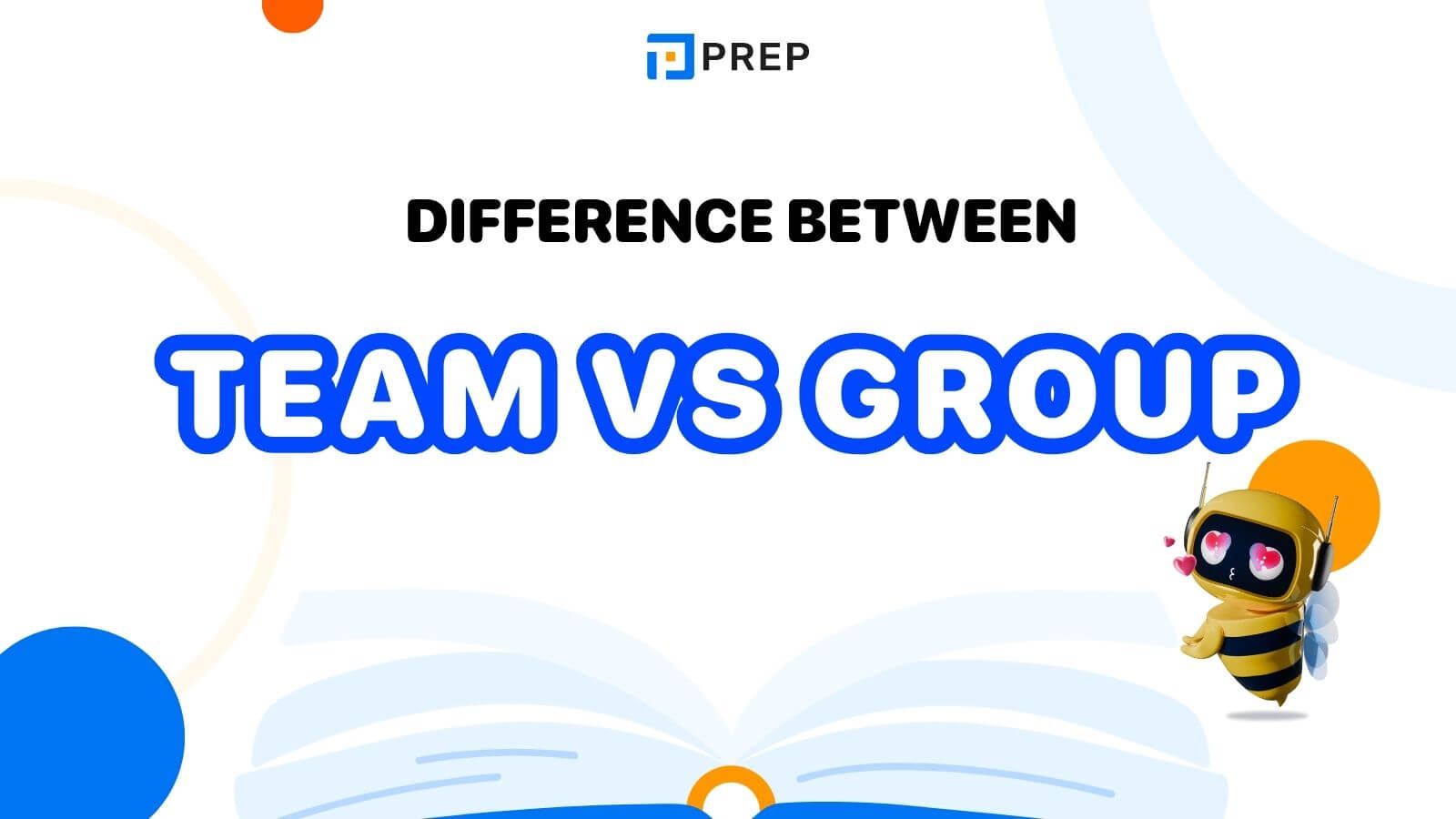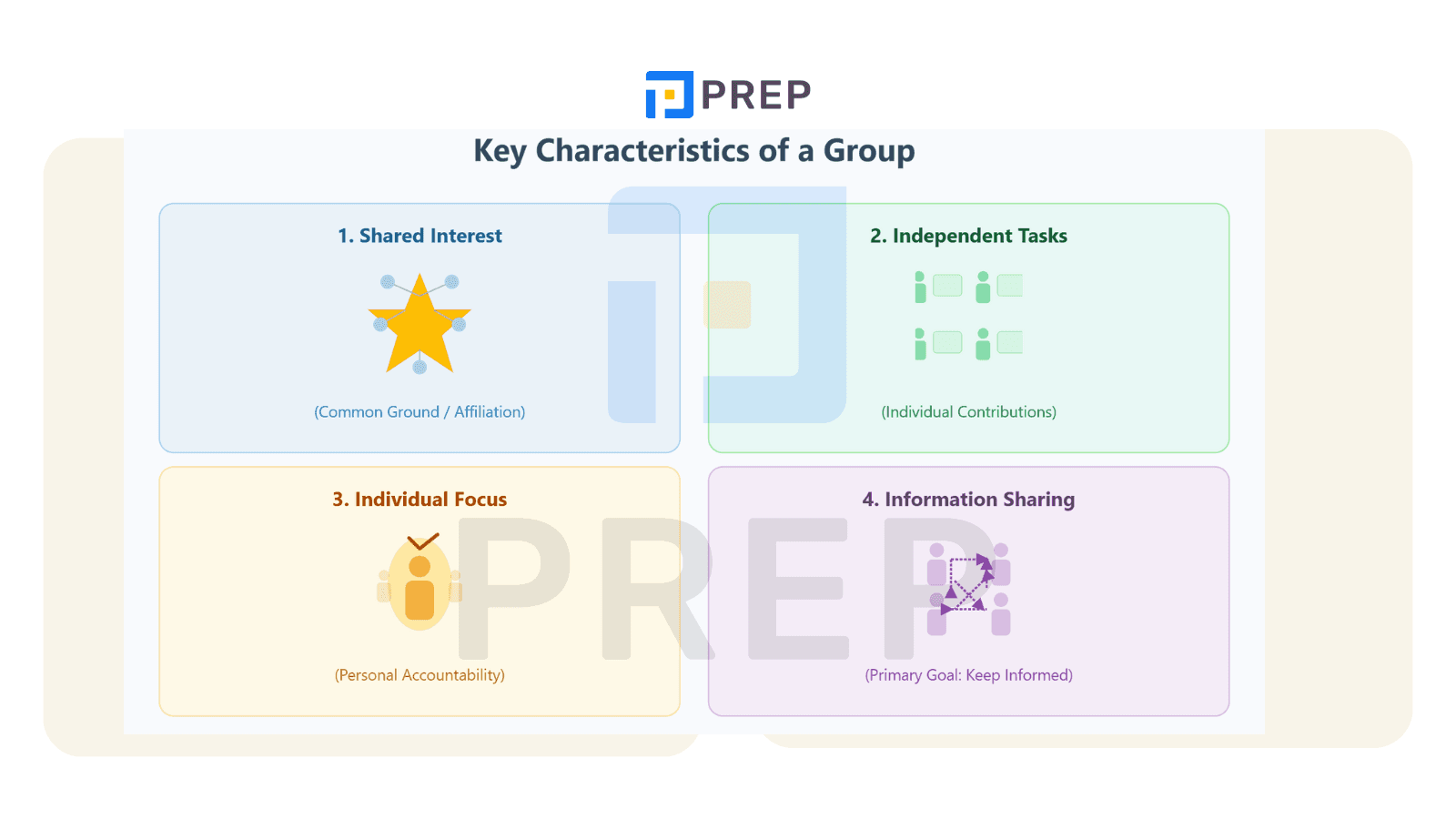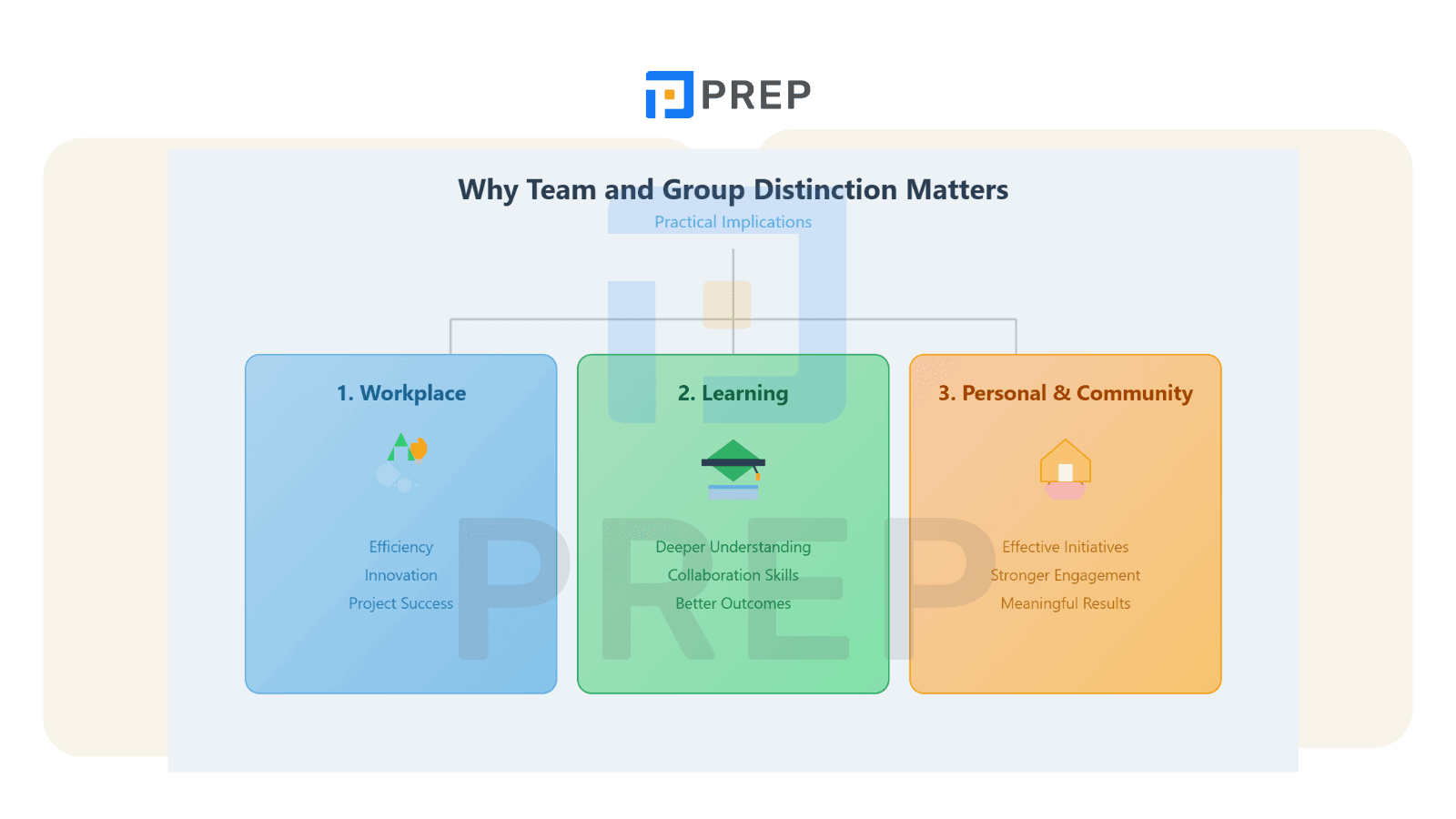Team and Group: Understanding the Crucial Differences and Why They Matter for Success
In today's collaborative world, we constantly find ourselves working alongside others, yet the outcomes of these collective efforts vary dramatically. Some groups achieve remarkable results that exceed expectations, while others with equally talented individuals struggle to meet basic objectives. This striking disparity often stems from a fundamental misunderstanding of collaborative structures.
The difference between team and group extends far beyond semantics. These distinct collaborative frameworks determine how people interact, share responsibility, and ultimately achieve results in both professional environments and educational settings.
This distinction affects virtually every aspect of collective work—from how meetings are structured and decisions made to how success is measured and celebrated. When you designate people as a "team" while actually operating as a "group," you create misaligned expectations that lead to frustration and underperformance. Conversely, applying loose group structures to challenges requiring true teamwork results in fragmented efforts and missed opportunities for innovation.
The confusion between teams and groups manifests across diverse contexts. In corporate settings, project failures often stem from treating interdependent work as independent tasks. In educational environments, collaborative learning assignments frequently underperform when students approach them as group activities rather than team endeavors. Even community initiatives suffer when the chosen structure doesn't match the required level of integration and mutual commitment.
Understanding this difference isn't merely theoretical—it provides practical guidance for structuring collaboration appropriately based on specific goals and circumstances. When information sharing or individual skill development takes priority, group structures offer efficiency and flexibility. When complex problem-solving or innovation becomes essential, team structures provide the necessary integration and accountability.
This article will examine the defining characteristics of both teams and groups, highlight their crucial differences across multiple dimensions, and provide practical guidance for choosing the right structure in varied contexts. You'll discover how to transform groups into teams when circumstances require, recognize common pitfalls in collaborative work, and apply these insights to enhance outcomes in professional, educational, and personal endeavors.
Join us as we explore this critical distinction that underlies effective collaboration in all domains. Let's begin by establishing clear definitions for both collaborative structures.
- I. Beyond Semantics: Why Distinguishing Between Groups and Teams is Essential
- II. Defining a "Group": More Than Just a Collection of Individuals
- III. Defining a "Team": The Synergy of Shared Purpose and Mutual Accountability
- IV. The Critical Differences: A Detailed Head-to-Head Comparison
- 1. Purpose: Individual Interests vs. Collective Mission
- 2. Goals: Personal Objectives vs. Shared Performance Targets
- 3. Accountability: Individual Responsibility vs. Mutual Commitment
- 4. Interdependence: Parallel Work vs. Integrated Effort
- 5. Skills: Similar Capabilities vs. Complementary Expertise
- 6. Leadership: Centralized Direction vs. Shared Function
- 7. Outcome: Sum of Parts vs. Collective Achievement
- 8. Summary Table: Group vs Team At-a-Glance
- V. Why This Distinction Matters Profoundly: Practical Implications
- VI. Understanding Group Development and Team Formation
- VII. Recognizing the Variations: Common Types Encountered
- VIII. Beyond the Core Differences: Answering Your Key Questions About Groups and Teams
- Q1: Is every collection of people working on a task automatically a 'team'?
- Q2: What exactly does 'mutual accountability' mean in practice for a team?
- Q3: What are common challenges or pitfalls when trying to function as a team?
- Q4: How does the leadership approach typically contrast between a designated group leader and effective team leadership?
- Q5: Can technology, like AI-powered learning platforms, actively support the development of team dynamics within study groups?
- Q6: Are there unique cultural factors in Singapore that influence how groups and teams operate effectively?
- IV. Harnessing the Power: Applying Your Understanding of Groups and Teams for Better Outcomes

I. Beyond Semantics: Why Distinguishing Between Groups and Teams is Essential
In today's interconnected world, the terms "team" and "group" are often used interchangeably in professional settings, academic environments, and everyday conversations. This casual substitution masks important structural and functional differences that directly impact productivity, learning outcomes, and overall success. Understanding the team and group difference isn't merely an academic exercise—it provides practical insights that can transform how you organize collaborative efforts and set expectations for collective work.
1. Setting the Stage: Common Confusion and the Need for Clarity
You've likely found yourself wondering whether the people you study with constitute a team or simply a group. Perhaps you've questioned why some collaborative efforts thrive while others falter despite involving equally capable individuals. These common uncertainties stem from blurred boundaries between fundamentally different collaborative structures. This article aims to dissect these differences clearly, providing you with actionable knowledge that extends beyond mere terminology.
2. The Core Impact: How Understanding the Difference Drives Better Collaboration and Outcomes
Recognizing the distinction between teams and groups directly influences how you structure work, communicate expectations, and evaluate progress. When you apply the right collaborative framework to a situation, you establish appropriate accountability measures, set realistic timelines, and create conditions for optimal performance. Organizations that correctly differentiate between team vs group dynamics report higher project completion rates, greater innovation, and more efficient resource utilization. For students and professionals alike, this understanding translates into improved productivity and higher-quality outputs.
3. Who Needs to Know This? (Relevance for Professionals, Students, and Learners)
This knowledge serves professionals seeking to enhance workplace collaboration, students navigating group projects and collaborative assessments, and language learners preparing for interactive examinations like IELTS or TOEIC. Whether you're organizing a corporate project, forming a study circle for upcoming exams, or preparing for real-world professional interactions, understanding the difference between team & group provides a significant advantage. This foundational knowledge applies universally across cultural contexts, organizational settings, and educational environments.
II. Defining a "Group": More Than Just a Collection of Individuals
To grasp the crucial differences between teams and groups, we must first establish a clear understanding of what constitutes a group in organizational and educational contexts. A group represents a fundamental form of human collaboration with distinct characteristics that set it apart from more integrated collaborative structures.
1. What is a Group? The Fundamental Definition
A group can be defined as a collection of individuals who share certain characteristics, interests, or affiliations but work primarily as individuals rather than as an integrated unit. While groups may exist within the same physical or virtual space and interact regularly, they function without the deep interdependence and shared accountability that characterize teams. The connection between group members typically centers on common external factors rather than a unifying goal requiring collective effort.
2. Key Characteristics of a Group
Groups exhibit several defining features that distinguish them from teams and other collaborative structures. These characteristics shape how group members interact, contribute, and measure success.
2.1. Shared Interest or Affiliation (Not Necessarily Purpose)
Groups form around common external factors—membership in the same department, enrollment in the same course, or shared interests. Unlike teams, groups don't require a unifying purpose that demands collective effort. Members may have related but individual goals, such as passing an exam or completing personal assignments, without necessarily working toward a single shared outcome that requires integration of their efforts.
2.2. Independent Tasks and Contributions
In groups, work typically proceeds along parallel or sequential paths rather than through highly interdependent processes. Members complete their portions independently, with limited need for continuous collaboration or integration of work products. This independence allows for flexibility but limits the potential for synergy that emerges from deeply interconnected efforts.
2.3. Individual Accountability Focus
Responsibility in groups rests primarily with each member for their specific contribution. While a group leader may coordinate activities and monitor progress, members are evaluated based on their individual performance rather than the group's collective achievement. This accountability structure emphasizes personal responsibility over collective outcomes.
2.4. Information Sharing as a Primary Goal
Interaction within groups often centers on sharing knowledge, providing updates, or exchanging information rather than collaboratively creating something new. Group meetings typically focus on reporting progress, discussing individual challenges, or distributing information—activities that support individual work rather than integrating diverse perspectives into novel solutions.

3. Examples of Groups in Everyday Life and Work
Understanding groups becomes clearer through concrete examples that illustrate their defining characteristics in familiar contexts.
3.1. Study Groups Reviewing Lecture Notes
When students gather to review lecture material, each typically focuses on understanding the content individually. They may share notes, clarify concepts for one another, or divide reading assignments, but ultimately each student remains responsible for their own learning and course performance.
3.2. Committees Sharing Departmental Updates
Departmental committees often function as groups where representatives meet periodically to share information about their respective areas. Each member reports on activities, discusses issues, and receives updates without necessarily working toward a unified deliverable that integrates their contributions.
3.3. Social Clubs with Shared Hobbies
Photography clubs, book discussion circles, and other interest-based gatherings typically operate as groups. Members share a common interest and benefit from collective resources or knowledge, but each pursues personal enjoyment or development rather than a unified objective requiring integrated effort.
III. Defining a "Team": The Synergy of Shared Purpose and Mutual Accountability
While groups provide valuable structures for coordination and information sharing, teams represent a more integrated form of collaboration with distinctive characteristics that enable them to tackle complex challenges requiring diverse skills and perspectives.
1. What is a Team? The Definition of Collective Effort
A team can be defined as a small number of people with complementary skills who commit to a common purpose, specific performance goals, and an approach for which they hold themselves mutually accountable. This definition highlights several critical elements—shared purpose, defined goals, complementary skills, and mutual accountability—that collectively distinguish teams from groups. Teams exist to achieve outcomes that require the integrated efforts of all members.
2. Essential Characteristics of a True Team
Teams display several defining attributes that enable them to achieve outcomes beyond what individuals working independently could accomplish. These characteristics create the conditions for synergy and high performance.
2.1. Compelling Common Purpose and Specific Performance Goals
Teams unite around a shared mission that requires collective effort and establish specific, measurable objectives that define success. This common purpose transcends individual interests, creating a sense of meaningful shared work. Clear performance goals provide direction and enable teams to measure their progress and effectiveness.
2.2. Interdependent Tasks Requiring Collaboration
Group and team members differ significantly in how they relate to tasks. Team members rely on one another's contributions to complete their work effectively. Tasks interlock in ways that necessitate ongoing collaboration, coordination, and integration of diverse perspectives and skills. This interdependence creates both challenge and opportunity—magnifying the impact of both successes and failures across the team.
2.3. Mutual Accountability for Outcomes
In a true team, members feel responsible not only for their individual contributions but also for the team's collective performance. Success and failure belong to the entire team rather than to individual members. This shared accountability creates stronger commitment to quality, timeliness, and excellence in all aspects of the work.
2.4. Complementary Skills Leveraged Collectively
Teams bring together individuals with diverse expertise, perspectives, and abilities that complement one another. These varied skills enable teams to address multifaceted challenges that would overwhelm any single person. Effective teams recognize and utilize these complementary strengths, assigning responsibilities that maximize each member's contribution.
2.5. Potential for Positive Synergy (Outcome > Sum of Parts)
Perhaps the most distinctive feature of teams is their potential to achieve results that exceed what the same individuals could produce working separately. This synergy emerges from the integration of diverse perspectives, mutual support, creative friction, and collaborative problem-solving that characterize effective teamwork.

3. Examples of Teams Achieving Collective Goals
Examining concrete examples helps clarify the distinctive nature of teams across various contexts.
3.1. Project Teams Delivering a Product Launch
A product launch team integrates marketing expertise, technical knowledge, design skills, and customer insight to create and introduce a new offering. Members collaborate continuously, adjusting their contributions based on others' input and progress. Their success depends entirely on how well they integrate these diverse elements into a coherent whole.
3.2. Language Learning Partners Preparing a Joint Presentation
When language learners collaborate on a presentation for an IELTS speaking assessment, they must integrate their skills, coordinate their delivery, and support one another through the process. Their success depends not just on individual language proficiency but on how effectively they coordinate their efforts and respond to one another.
3.3. Sports Teams Competing in a League
Athletic teams provide perhaps the clearest illustration of team dynamics. Players with specialized roles work interdependently toward the shared goal of winning matches. Each member's performance affects the entire team, creating strong mutual accountability. Success requires not just individual skill but coordinated effort, strategic adaptation, and collective resilience.
IV. The Critical Differences: A Detailed Head-to-Head Comparison
With clear definitions established for both teams and groups, we can now directly compare these collaborative structures across several key dimensions. These differences explain why effectiveness requires applying the right structure to each situation.
1. Purpose: Individual Interests vs. Collective Mission
Groups typically form around shared interests, common characteristics, or administrative convenience, with members pursuing primarily individual goals that happen to overlap. Teams, conversely, unite around a compelling common purpose that cannot be achieved without integrated effort. This shared mission creates stronger cohesion and commitment in teams than in groups, where connection may remain superficial.
2. Goals: Personal Objectives vs. Shared Performance Targets
In groups, goals remain predominantly individual, with personal success defining achievement even when members work in proximity. Teams establish specific, shared performance objectives that define collective success. These shared targets create stronger interdependence and mutual commitment among team members than among group participants, who may succeed individually despite others' failures.
3. Accountability: Individual Responsibility vs. Mutual Commitment
Groups emphasize individual accountability, with each member responsible primarily for their own contribution and outcomes. Teams embrace mutual accountability, where members feel responsible not only for their personal performance but for the team's collective results. This shared responsibility creates stronger pressure for excellence and more robust support systems within teams.
4. Interdependence: Parallel Work vs. Integrated Effort
Group members typically work independently on parallel or sequential tasks, with limited need for ongoing collaboration. Team members work interdependently, with tasks interconnected in ways that require continuous coordination, adaptation, and integration of diverse contributions. This interdependence creates both greater potential and greater challenge in teams.
5. Skills: Similar Capabilities vs. Complementary Expertise
Groups often comprise individuals with similar skills and backgrounds, particularly in educational settings. Teams intentionally bring together complementary expertise, diverse perspectives, and varied capabilities that enable them to address complex challenges requiring multiple skill sets. This diversity creates both greater potential and greater coordination challenges in teams.
6. Leadership: Centralized Direction vs. Shared Function
Groups typically operate under more centralized leadership, with a designated leader organizing activities, monitoring progress, and evaluating contributions. Teams often distribute leadership functions according to situation and expertise, with members taking leadership roles as needed based on their knowledge and skills. This flexibility enables teams to leverage diverse talents more effectively.
7. Outcome: Sum of Parts vs. Collective Achievement
The ultimate output of a group typically represents the sum of individual contributions, assembled without substantial transformation through interaction. The outcome of a team transcends individual inputs, emerging through integration, mutual influence, and creative recombination of diverse perspectives and skills. This transformation creates the potential for innovation and breakthroughs.
8. Summary Table: Group vs Team At-a-Glance
|
Dimension |
Group Characteristic |
Team Characteristic |
|
Purpose |
Shared interest or affiliation |
Common mission requiring collective effort |
|
Goals |
Individual objectives |
Specific shared performance targets |
|
Accountability |
Individual responsibility |
Mutual commitment to collective results |
|
Interdependence |
Parallel or sequential work |
Integrated, interconnected tasks |
|
Skills |
Similar capabilities |
Complementary, diverse expertise |
|
Leadership |
Centralized direction |
Shared, situational leadership |
|
Outcome |
Sum of individual contributions |
Synergistic collective achievement |
V. Why This Distinction Matters Profoundly: Practical Implications
Understanding the difference between teams and groups isn't merely an academic exercise—it has profound practical implications for how we organize work, set expectations, and evaluate success across various contexts. Applying this knowledge strategically improves outcomes in professional, educational, and personal domains.
1. Impact in the Workplace: Efficiency, Innovation, and Project Success
In professional settings, correctly distinguishing between team and group functions directly affects productivity, resource allocation, and results. Projects requiring innovation and complex problem-solving benefit from true team structures that integrate diverse expertise and foster creative friction. Conversely, routine coordination and information-sharing may function efficiently as groups without the resource investment that effective teamwork requires. Organizations that apply the right collaborative structure to each situation report 30-50% higher project completion rates and significantly greater innovation. Misapplying team expectations to group functions or treating teams as mere groups creates frustration, inefficiency, and missed opportunities for breakthrough thinking.
2. Significance for Students and Learners
For students and language learners, this distinction provides crucial guidance for optimizing both learning processes and performance outcomes.
2.1. Optimizing Study Strategies
Understanding when to employ group versus team approaches helps students structure their collaborative learning effectively. Content review and knowledge sharing may work best as group activities, with each student responsible for mastering material individually. Complex problem-solving assignments or creative projects that require diverse perspectives benefit from team structures with integrated efforts and shared accountability.
2.2. Excelling in Collaborative Assessments
Many modern assessments, including IELTS and TOEIC speaking components, evaluate collaborative skills alongside individual proficiency. Students who understand the difference between group interaction and genuine teamwork demonstrate stronger turn-taking, idea-building, and negotiation skills in these assessments. This understanding translates directly into higher scores and better preparation for real-world communication challenges.
2.3. Building Essential Future-Ready Skills
Employers consistently rank teamwork among the most valuable skills for the modern workplace. Students who intentionally develop true team capabilities—mutual accountability, interdependent work processes, and synergistic thinking—position themselves advantageously for future careers. These skills transfer across domains, proving valuable in both professional and personal contexts where collective achievement matters.
3. Effectiveness in Personal Projects and Community Initiatives
Beyond formal work and educational settings, understanding differences between group & team dynamics improves outcomes in community service, volunteer activities, and personal projects. Neighborhood improvement initiatives, charitable fundraising efforts, and family projects all benefit from applying the right collaborative structure. Community initiatives requiring diverse talents and integrated efforts succeed more consistently when organized as teams with clear shared goals and mutual accountability, while information-sharing networks function effectively as groups with more loosely connected structures.

VI. Understanding Group Development and Team Formation
Collaborative structures aren't static—they evolve over time through interaction, shared experience, and intentional development. Understanding this evolutionary process helps you guide groups toward team functionality when circumstances require deeper integration and collective achievement.
1. Can a Group Evolve into a Team? The Potential for Transformation
Groups can indeed develop into high-functioning teams, but this transformation rarely occurs accidentally. It requires deliberate effort, clear direction, and specific structural changes that foster interdependence and mutual accountability. The journey from group to team typically begins with establishing a compelling shared purpose that transcends individual interests, followed by developing specific performance goals that require collective effort. Without these foundational elements, groups may improve coordination but rarely achieve true team functionality.
2. Key Elements Needed for Team Formation (Building Trust, Shared Goals, Defined Roles)
Several critical factors facilitate the evolution from group to team. Establishing clear, compelling shared goals creates a unifying purpose. Building interpersonal trust enables the vulnerability and open communication essential for deep collaboration. Defining complementary roles that leverage diverse strengths creates productive interdependence. Developing explicit communication protocols ensures effective information flow and conflict resolution. Fostering mutual accountability shifts focus from individual performance to collective achievement. Organizations and educational institutions that intentionally develop these elements report more successful team formation and higher collective performance.
3. Recognizing Stages: A Brief Look at Models like Tuckman's (Forming, Storming...)
Team development typically progresses through recognizable stages, most famously articulated in Tuckman's model. The forming stage involves orientation, initial connection, and establishing basic structures. Storming brings tension, conflict, and competing perspectives as members navigate differences. Norming establishes shared expectations, communication patterns, and working relationships. Performing represents mature team functioning with high interdependence and productivity. Understanding these stages helps leaders and members recognize that conflict and adjustment are normal parts of team development rather than signs of failure. This perspective fosters patience and appropriate interventions during challenging transition periods.
VII. Recognizing the Variations: Common Types Encountered
Both teams and groups appear in various forms across organizational, educational, and social contexts. Recognizing these common variations enhances your ability to identify and work effectively within different collaborative structures.
1. Common Examples of Groups (Formal, Informal, Task, Interest...)
Groups take many forms depending on their purpose and structure. Command groups follow organizational hierarchies, typically comprising a manager and direct reports. Task groups form to accomplish specific limited objectives. Interest groups unite around shared topics or concerns. Friendship groups emerge through social connection. Formal groups exist within official structures, while informal groups develop naturally through interaction. Study groups support individual learning through information sharing. Focus groups provide feedback or input on specific topics. Each type serves valuable functions while maintaining the characteristic independence and individual accountability of group structures.
2. Common Examples of Teams (Project, Self-Managed, Cross-Functional, Virtual...)
Teams also appear in diverse forms across contexts. Problem-solving teams address complex challenges requiring integrated expertise. Self-managed teams operate with high autonomy and collective decision-making authority. Cross-functional teams bring together members from different specialties or departments. Virtual teams collaborate across geographic boundaries through technology. Project teams focus on specific deliverables with defined timelines. Language practice teams integrate diverse linguistic strengths to develop collective communicative competence. Each type maintains the fundamental characteristics of shared purpose, interdependence, and mutual accountability that define team structures.
VIII. Beyond the Core Differences: Answering Your Key Questions About Groups and Teams
As you apply this knowledge to real-world situations, several practical questions naturally arise. These answers address common uncertainties and provide additional guidance for effective collaboration.
Q1: Is every collection of people working on a task automatically a 'team'?
No, merely assigning people to work together doesn't create a team. True teams require three essential elements: interdependent tasks that necessitate collaboration, shared performance goals that define collective success, and mutual accountability where members feel responsible for the entire outcome. Many work assignments create task groups rather than teams—people work in proximity but maintain primarily individual responsibility for discrete components. Recognizing team or group distinction helps set appropriate expectations and structures.
Q2: What exactly does 'mutual accountability' mean in practice for a team?
Mutual accountability means team members feel responsible not just for their individual contributions but for the team's overall performance and results. In practice, this manifests as members helping colleagues who struggle, providing feedback to improve collective work, sharing both credit for successes and responsibility for failures, and measuring personal effectiveness by the team's achievement rather than individual performance alone. This shared responsibility creates stronger commitment and more robust support systems than individual accountability structures.
Q3: What are common challenges or pitfalls when trying to function as a team?
Teams frequently encounter several predictable challenges. Unclear or competing goals create confusion about priorities and direction. Insufficient trust prevents the vulnerability necessary for honest communication and creative friction. Role ambiguity generates inefficiency and conflict. Poor communication protocols hamper information flow and problem-solving. Conflict avoidance suppresses potentially valuable different perspectives, while unmanaged conflict escalates into personal tension. The "free-rider" problem emerges when accountability systems fail to address uneven contribution. Recognizing these common pitfalls enables proactive intervention before they undermine team effectiveness.
Q4: How does the leadership approach typically contrast between a designated group leader and effective team leadership?
Group leaders typically employ more directive approaches—establishing clear expectations, assigning specific tasks, monitoring individual progress, and evaluating discrete contributions. Effective team leaders function more as facilitators or coaches—clarifying shared purpose, fostering mutual accountability, building collective problem-solving capacity, and developing the team's ability to manage its own processes. Team leadership often distributes across members according to expertise and situation rather than residing permanently with one person. This adaptive leadership approach enables teams to leverage diverse talents more effectively than the centralized direction typical in groups.
Q5: Can technology, like AI-powered learning platforms, actively support the development of team dynamics within study groups?
Yes, modern learning platforms increasingly incorporate features that facilitate the transition from study groups to learning teams. Collaborative workspaces enable real-time co-creation rather than merely sharing completed work. Progress tracking visible to all members fosters mutual accountability. AI systems can analyze communication patterns, identifying dominance, exclusion, or effective idea-building. Platforms like PREP integrate these capabilities with specific guidance for language learners, helping transform traditional study circles into genuine learning teams with shared objectives and integrated efforts.
Q6: Are there unique cultural factors in Singapore that influence how groups and teams operate effectively?
Singapore's multicultural environment creates both opportunities and considerations for effective collaboration. Communication styles often blend Western directness with Asian emphasis on harmony and relationship maintenance. Awareness of "face" (personal dignity and social standing) influences how feedback and disagreement are expressed within teams. Approaches to hierarchy may vary across cultural backgrounds, affecting how leadership functions distribute in teams. Educational emphasis on both excellence and collaboration creates strong foundations for team development. Recognizing these factors without making sweeping generalizations enables more effective team building in Singapore's diverse professional and educational environments.
IV. Harnessing the Power: Applying Your Understanding of Groups and Teams for Better Outcomes
Understanding the distinction between teams and groups provides valuable insight, but true benefit comes from applying this knowledge strategically to enhance collaboration and achieve better results across contexts.
1. Recapping the Essential Distinction: Purpose and Accountability as Linchpins
At their core, teams and groups differ fundamentally in two critical dimensions: the integration of purpose and the structure of accountability. Teams unite around shared performance goals that require collective effort and hold themselves mutually responsible for outcomes. Groups coordinate individual efforts toward related but separate objectives, with accountability resting primarily with each member for their specific contribution. These distinctions shape everything from communication patterns and meeting structures to performance evaluation and resource allocation.
2. Moving Forward: Choosing the Right Structure for Your Goals
As you approach collaborative situations, assess whether your objectives require a group or team structure. For information sharing, routine coordination, or parallel individual development, group structures provide efficiency and flexibility. For complex problem-solving, innovation, or challenges requiring diverse expertise, invest in building true team functionality. Apply this discernment to work projects, study collaborations, and community initiatives. Match your collaborative structure to your purpose rather than defaulting to familiar patterns or terminology. This strategic approach significantly improves outcomes across professional, educational, and personal domains.
3. Final Thought: The Conscious Effort Required for True Teamwork
While groups form relatively easily through proximity or shared interests, high-performing teams require deliberate development and ongoing maintenance. The deeper integration and mutual accountability that characterize teams demand investment in relationship building, explicit process development, and continuous adjustment based on feedback. This investment delivers substantial returns when circumstances require the synergy and collective intelligence that only teams can provide. Understanding the difference between team and group represents the first crucial step toward harnessing the full potential of human collaboration.

Hi I'm Chloe, and I am currently serving as an Product Content Administrator at Prep Education. With over five years of experience in independent online IELTS study and exam preparation, I am confident in my ability to support learners in achieving their highest possible scores.
Comment
Premium content
View allPersonalized roadmap
Most read












